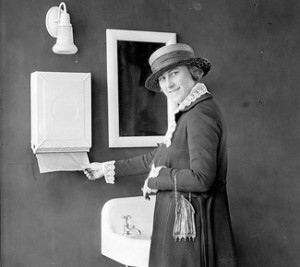
These days, the talk around Berlin, New Hampshire, revolves around what comes next. Politicians and venture capitalists and community groups are hard at work trying to come up with a second act for this former paper mill town. It’s been this way for about five years now.
If you were born before 2007, you know that Berlin and the paper industry were inexorably linked. For 150 years, some version of the Brown Paper Company provided opportunity and steady work for thousands of men and women. The loggers, the truck drivers, the inventors, the mill workers all spent their money locally, supporting local businesses from bars to bowling alleys.
The town revolved around the mill for so long there’s nothing else to remember before it, at least in any organized sense. Before Brown, Berlin – the city that trees built – was just trees. In 1851, the Grand Trunk Railway connected the upper Androscoggin Valley – that vast forest north of the White Mountains and south of Canada – to the shipyards and railyards of Portland, Maine. Soon, lumber and lumber products (shingles, window frames, wood ashes, laths for plaster and lath walls, and pickets for fences) were being shipped to distant markets. Businessman W. W. Brown took notice, and in 1868 he established the Berlin Mills Company, later Brown Paper, in Berlin. The town took off and didn’t look back.
By 1903, the ever-expanding mill complex housed a wood yard, pulp dryers, newsprint machines, and a hydroelectric plant. The mill was producing 200 tons of paper per day. To feed the hungry paper machine, scouts sought out the best softwood stands and logging camps sprang up like mushrooms on the hillsides in New Hampshire, Vermont, and northwestern Maine. In the beginning, all the trees were cut by hand and hauled or “twitched” out of the woods by horses. During spring log drives, the mass of logs filling the Androscoggin could extend five miles upriver.
It seems the more wood the loggers harvested, the more the machines demanded. To meet the need, Brown bought 3,750,000 acres in Quebec. A 225-foot ship, the Itororo, hauled pulp wood down the St. Lawrence to Quebec City, where it went on to Berlin by rail. By 1917, the Berlin Mills Company, with three paper mills and 4,250,000 acres of timberland, was the largest pulp and paper manufacturer in the world.
Gradually the company phased newsprint out for highergrade paper, which required bleaching with chlorine gas. So Brown built a plant to produce the gas – just one of many innovations that maintained the company’s prominence in the industry. A cutting edge research and development facility was built on site and run by Hugh K. Moore, a prolific inventor and chemist, who began his career working in the mill yard for $1.50 a day. At its peak, the research and development facility employed 100 scientists and earned 600 patents in a variety of product lines, including Kream Krisp, a lard substitute and forerunner to Crisco. Highly purified alpha cellulose pulp could be dissolved and reconstituted to make rayon, cellophane, cellulose acetate film, celluloid, resins, lacquers, and explosives. Solka floc, cellulose fibers pulverized to flour, was (and is) used in foods and beverages, pharmaceuticals, plastics, and filters – including those for cigarettes. In the 1920s, W. E. Corbin invented the first wetstrength towel. These brown Nibroc (Corbin spelled backwards) towels, folded into wall-mounted metal cabinets, became one of the most recognizable paper products in the country.
The Great Depression brought decline. Demand decreased. Profits shrank. In 1935, Brown Company filed for bankruptcy and the Brown family lost ownership.
At the same time, environmental consciousness was changing, and the transition was especially hard on the paper industry. Sulfite waste liquor and noxious pollutants caused the Androscoggin River to foam and smell. The air for miles around smelled as well.
Donna Larsen played field hockey for Berlin High School. “We used to win all of our home games because of the sulfur. The other teams were coughing and hacking; they all had runny eyes. For home games, we always prayed for a downdraft.”
During the 1940s and 1950s, facing increasing public concern and a court order to mitigate pollution, the reorganized company phased out sulfite for more environmentally friendly sulfate processes. The bulk of the switchover occurred in 1950s (although one mill, the Burgess Sulphite mill, continued operating until 1963). Still, sulfite or sulfate, a paper mill town smells like a paper mill town – something like ammonia crossed with rotten cabbage.
As Brown worked to clean up its act, competition from western pulp and paper manufacturers increased and – double whammy – the softwood supply around Berlin began to dry up. To compensate, the company harvested hardwood for plywood and veneers. The wood operations became increasingly mechanized as the company tried to streamline. Horses, axes, and peaveys were replaced with bulldozers, skidders, and chainsaws.
Relative prosperity in the 1950s and early 1960s came in part from layoffs and the sale of assets. Contrary to the rosy picture painted in the company’s annual reports, directors’ records detail labor strikes and protracted union negotiations. Instead of being a leader in the industry, by the mid-1960s the company was scrambling to survive.
In hindsight, the devolution of Brown Paper seems steady and inevitable, as it was sold and resold, divided and reconfigured. Its history as an individual company ended in 1968 when it was purchased by Gulf and Western. Brown was sold again and again, first as a division of James River, then Crown Vantage, American Tissue, and Fraser Paper. Gradually, its assets and timberlands were sold off in failed attempts to survive foreign competition and high energy and transportation costs.
When the mills shut down in 2001, 860 workers were laid off. A year later, Fraser Paper purchased them and tried to revive the pulp and paper industry in Berlin, until $10 million in annual losses forced a shutdown in 2006. In 2007, the mills were demolished and 200 years of logging and paper making were truly over.
The Voices of the Mills
In the spring of 2007, the Androscoggin Valley Community Partners, in conjunction with the Arts Alliance of Northern New Hampshire, conceived the “Telling Our Stories” project that brought me to Berlin. Their idea: Collect the stories before they are lost.
The mission seemed fairly urgent, with the old mill buildings being demolished day by day, many people out of work, many leaving the city. It seemed as if every third or fourth house had a “For Sale” sign out front. Burned out hulks of houses on Main Street seemed a symbol of loss and hopelessness. Except for a skeleton crew hanging on just across the town line at the Cascade plant in Gorham, the industry that had sustained this place for generations was no more.
This was a city in mourning. On my first day, I walked into an office for directions. The woman behind the desk asked what I was up to. When I told her, her eyes filled with tears. “My husband worked at the mill,” she said.
Another woman described how heart wrenching it was to watch the mills go. “My father worked there, my brothers, my sisters, even my granddaughter when she was going to Plymouth State University. When I cross the bridge and look down river, there’s so much gone. There’s nothing left to preserve.”
Maybe it was the realization that this was indeed the end of an era that made people eager to tell their stories. In any case, they talked and I listened. Here’s a taste of what I heard.
Woods Stories
Medora Snigger worked most of her adult life in the mills. Though long retired, she still got together with colleagues for a weekly meal. In the mills, fellow workers were like family.
But her story begins in the woods.
“I came out of the woods in 1941 when I was 17,” she said. Mother cooked, father logged, she and her siblings grew up in the logging camps.
Loggers had a reputation for being rough but, Snigger said, many were fathers themselves and loved having children around. For toys, her father made little buck saws out of broken blades. “We weren’t allowed axes, but buck saws, yes.”
Asked if it was a dangerous life, she said, “My mother gave us a scare once.” To cross the river, a boat was rigged with cables and pulleys, so a person could pull it from one side to the other. Snigger’s mother had given a logger a ride across. On the return trip, one of the cables let go and catapulted her into the frigid water. When the little ones told Snigger that her mother had fallen into the river, she said, “I practically sunk to the floor.”
But mother wasn’t drowned that day. “She went down, but she came right back up and, happily, she was at the side of the boat, so she grabbed hold.” Rescuers pried her frozen hands loose, brought her home, and thawed her out by the woodstove.
Helen Burns, a logger, told about the time she saved a man’s life:
We was up in Jefferson cutting on government land. Mr. Tyler had a pair of hosses. We done the cutting and he done the hauling out with the hosses on a scoot. They built a big skidway with a road underneath, so they could drive the big truck under and roll the logs onto it. Mr. Tyler was taking the logs off the skidway. He climbed on to free a log that was hung up. All of a sudden the logs behind him started to let go. Well, I grabbed a cant dog and drove it into the log he was holding onto, held the logs back ’til he could pull himself out of the way.
Nicest old man you’d ever want to meet. Just as gentle as he could be. Boy, when I let them logs go, that whole skidway come down through there. Would have squashed him to death.
Afterwards he thanked me and told everybody he knew how I saved his life. You didn’t think anything of it at the time, but I did think of it in years later. I was scared to death. When I jumped in there by side of him to hold them logs, I had no idea whether I could or not. We could have both been killed right there.
It’s strange how things will happen. At the time you don’t realize what you’ve done. You see it and you have to do it.
He could jump like a rabbit for a man his age. He was very limber on his feet. He was an elderly man, so we always called him Mr. Tyler. If he would have said to call him Clarence, I would have, but he never did.
Leon Hawkinson, in 1953, at age 25, took a job as camp clerk, a multi-faceted position that entailed being the bookkeeper, paymaster, human resources manager, storekeeper, and sometimes doctor. “Their axes were just as sharp as razors,” he said. “One guy came in with a cut in his upper leg through to the bone.” Hawkinson bandaged him up and said, “You’ve got to go to Berlin right off. You might get an infection.” The guy said, “It looks good to me.” He was back at work three weeks later.
It was a rough life, but not without its rewards, including the bountiful food. Some cooks were known for their delicious beans, stews, pies, bread, and cookies. Men vied to work at those camps. But at some camps, cooks were known as boilers. Hawkinson said, “No matter what you sent up for food, they’d boil it. They’d boil a T-bone steak.” Men vied not to work at those camps.
Numbers tell a lot about the logging and paper industry: 60 cents for a meal at the logging camp, 700 men and 2,500 horses in the woods around Lake Parmachenee in western Maine, more than 20,000 populating the city of Berlin in its heyday, most employed by Brown Company or providing services (grocers, barbers, teachers) to the mill workers and their families. The population has dropped to 10,000 with crippling unemployment, yet people remember when Berlin boasted the highest per capita income in the state. On a Friday night in the good old days, crowds jammed Main Street – shopping, dining, drinking, enjoying all the amenities of a big little city.
Berlin’s heritage is diverse: Norwegian, French, Greek, Jewish, Russian, and more. They came to Berlin for work and they found it. As you walk its streets you still hear, among the Yankee drawls, the precise intonations of second-generation Lebanese, musical French and Italian inflections, the hint of an Irish brogue, Norwegian lilts.
Ola Oleson spoke proudly of his father, Alton: “My father’s first job in Bog Brook was loading logs that were bigger around than they were long. In Kennebago, opening up Crowley Brook, they found the King’s stamp on some of the pines. The stamp marked mast trees, claimed for the King of England and his sailing ships. In the College Grant, they found the Norwegian hand carved in a stone, thumb and forefinger extended: the sign that somebody had died on that spot. “The Norwegians came first. Squareheads, like me! The French came later.”
“Lord,” Oleson’s mother, Norma, piped up, “The woods were full of them!”
Mill Stories
Alton Oleson worked in the woods, but his son worked in the mills, where you could learn a skill and have a career. Gina Belanger said, “It was an apprenticeship system. You were scrutinized until you got it right. You might be running an 11-story boiler that could wipe out half the city. A lot of people think we’re unskilled labor, but it took a lot of skill to keep those places from blowing up.”
Jenny Parent worked in the towel room making those popular Nibroc towels. When I met her, she was 101 years old.
When the towel room first opened, that’s when I started. I was 17 years old. It’s hard, hard work, but when you’re young, you don’t mind it. When I started, the towel room had just two machines. After a while, it got up to 14. Men loaded the machines. Women packed the towels.
They ask me, “Jenny, why did you keep doing that hard, hard work for all those years?”
I say, “For the money, same as everybody else!” I was bringing home money for 48 years.
Not only was the work hard, it was dangerous. Everybody has a story about a family member or friend who was injured or killed. Often when there was trouble, Robert Therriault, millwright, got the call.
One time they call me over. They say: “Hey, the belt is off over there.” I look. I say, “What is this?” I pick up a finger. “Who owns this finger?”
One guy, I pulled him out of the machine. He wanted to check his reel. But the guard was not big enough and it pulled him right in and that roller grounded up his arm. I had to take the guard off. Pull him out of the machine. Lay him down.
Anyway, I said, “Geez, I hope they’ll be able to save his arm. You could see all the nerves and stuff. But as soon as they take him away, the boss says: “OK, get the machine going again. He’s being taken care of.”
This was the mentality. It was a rough way, but that was our lives at that time.
Therriault worked to make conditions better for the mill workers. He served as head of the union for a time. He and others went to bat for women who, for decades, were allowed only to work in the towel room.
I was familiar with the national law. I went to the union. Some brave women signed the complain and there was a meeting with Equal Opportunity from Washington and the bosses at the mill. It wasn’t just the bosses the women were fighting. It was the union, too.
A friend of mine says to me about my wife: “Why don’t she stay home and wash her dishes like everybody else?” But the law was on our side.
The mills were a world unto themselves and a microcosm of the world at large. Women’s rights were slow to come to the Brown Paper Company, but they made it. Environmental awareness and pollution control, these too came eventually. In the 1950s, a lot of money went into cutting stream and air pollution. It was bad. The river foamed. The smoke was so acrid there were no mosquitoes. They said if you lived in Berlin, you didn’t smell the sulfur. Or if you did, it was the smell of money!
One of Louis Gagnon’s first jobs was in the tank room.
These rolls of recycled newspaper would go in the tank, and they’d sink that down in and put tar in, then drain that all out and fill it with water. But when they opened the cover, like a clam steamer, all that haze and mist would come out. They used to give us cold cream to put on our face so we didn’t burn. I was walking to work one day. My face was burning just like somebody had a blowtorch on it. I said to hell with this. I said to the guy, “If this is all you got for me, I don’t want it.”
Went back a year later. They put me in the tube mill. I had my mind made up I’d stick with it. I was married then.
His wife, Rita, said, “Five out of ten in my family had cancer. In his family, three or four, I don’t know.” How much of that had to do with the mills? Who knows?
Marcel Leveille worked as a chemist in research and development for Brown.
For a while we had to pick up samples of the pulp every two hours. You put it in a baggie. Someone would pick it up and take it to Cascade for a smell test.
We were curious, were they really doing a smell test? So my friend took half a bottle of Aqua Velva and dumped it on this sample. The next day, they called: “Have you changed anything in the cooking process?”
“Why you ask?”
“Well the pulp smells different. It’s what we think we might like the pulp smelling like.”
The End of an Era
Brown Company never got the pulp to smell like Aqua Velva, but ironically, by the time the mills were closing for good, many environmental problems had been solved.
Normand Caouette recalled the moment he realized his life’s work was coming to an end.
My last job at the mill was cooking the wood. One night I was sitting in front of the computer panel and an alarm went off. I wasn’t getting enough softwood chips in the mix. I called the guy supposed to be feeding the chips.
“Where are the chips?” I says.
“There’s no more.”
“I only need a couple tons.”
“Norm, there’s no more.”
I didn’t know the yard was empty. There really was no more. The mill was shutting down temporarily, they said, but when I walked out, I said to the men: “Take a good look. We may never come back.”
We think of September 11, 2001 as a turning point in American history. But for Berlin, September 10, 2001 was also a turning point. That was the day they put the locks on the doors. Ola Oleson said, “The average age of the men laid off was 54. What do men at that age do? No education. Some of them couldn’t read or write. The mill – that’s all they knew.”
The river runs clear these days and the air no longer stinks. The debate about the best use of the old mill site continues: A park? A business center? More industry? An ATV park attracts tourists, so that’s good for business. The new federal prison, when it opens, will provide some jobs. And the construction of a biomass plant will require up to 400 workers, with permanent jobs for 40 when it begins producing electricity in 2013.
“Mr. Brown came here with a vision,” Caouette said. “He accomplished his vision. But nobody says, ‘Thank you, Mr. Brown.’ What’s sad is 200 years of heritage and paper making history are gone.”
“Berlin will come back,” the people say. “Maybe not in my lifetime, but it will come back.”


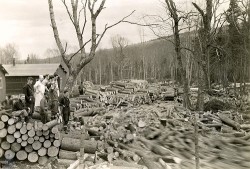
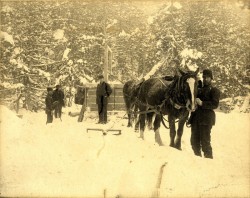
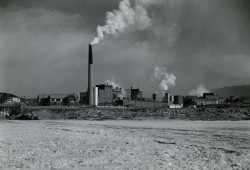
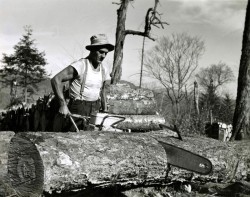
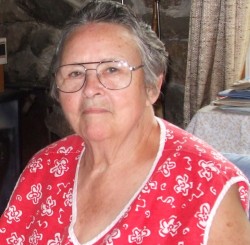
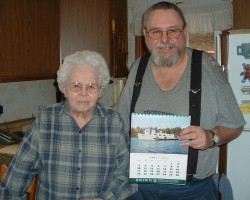
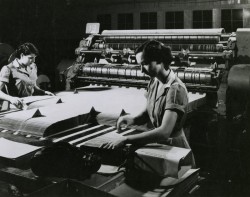
Discussion *